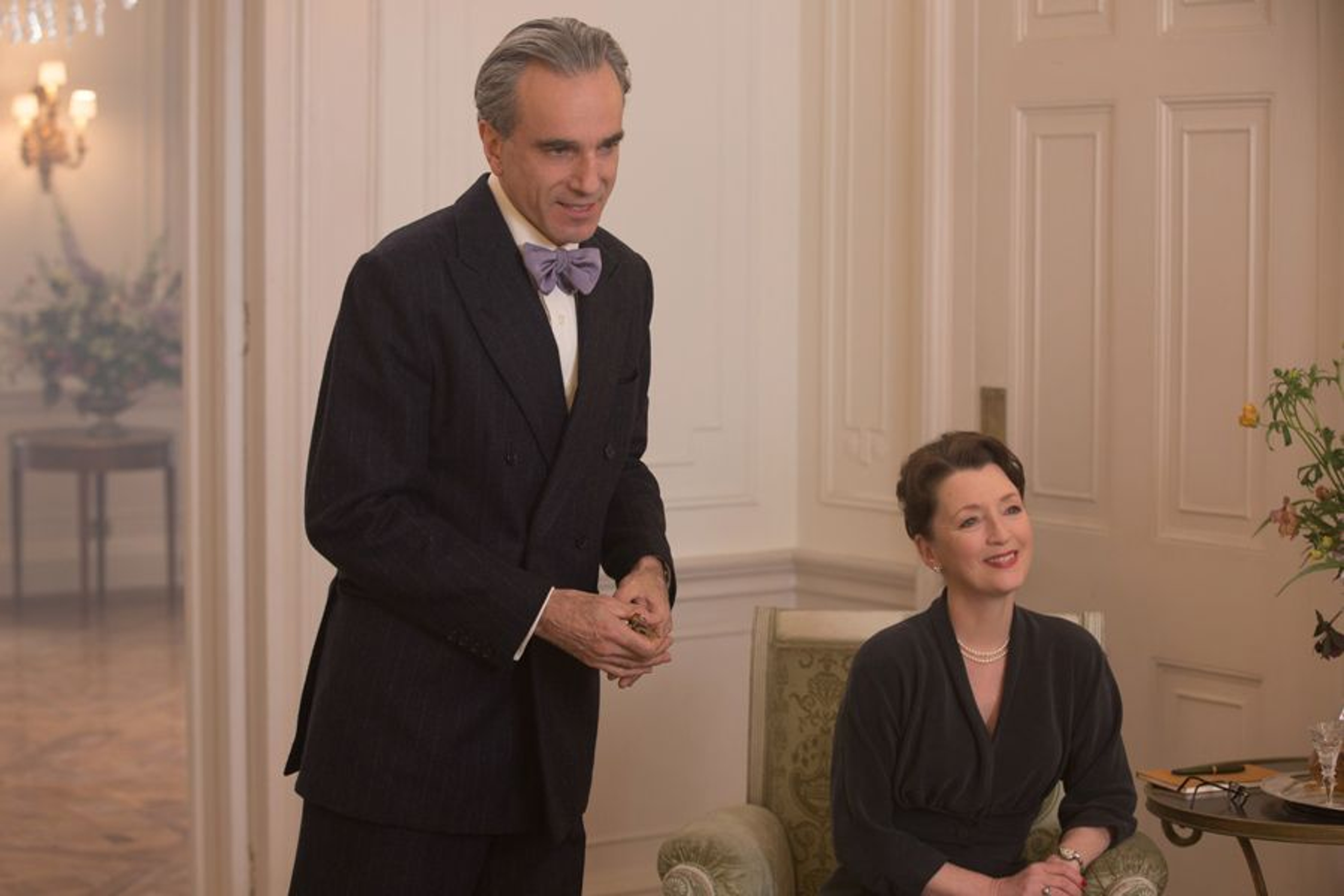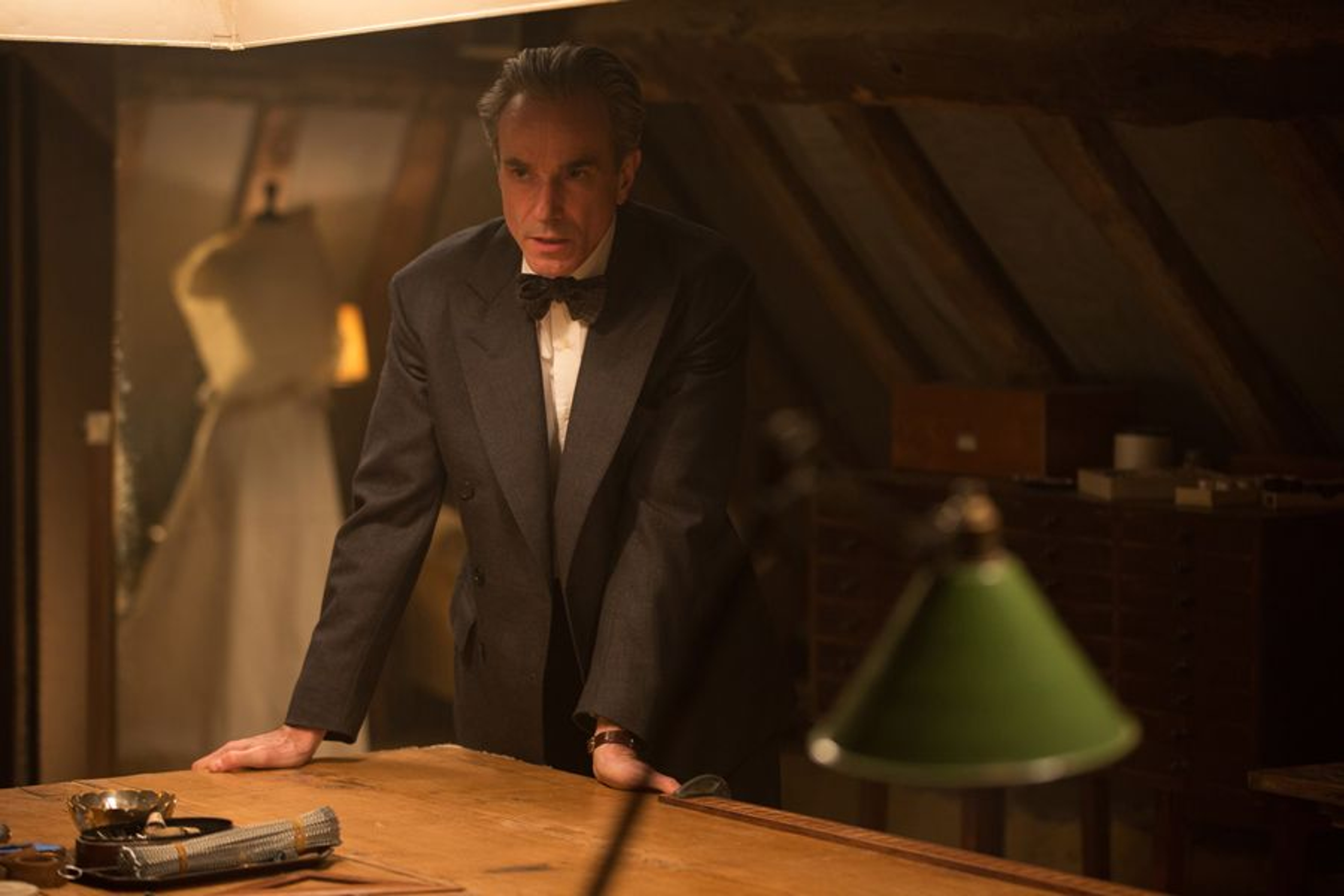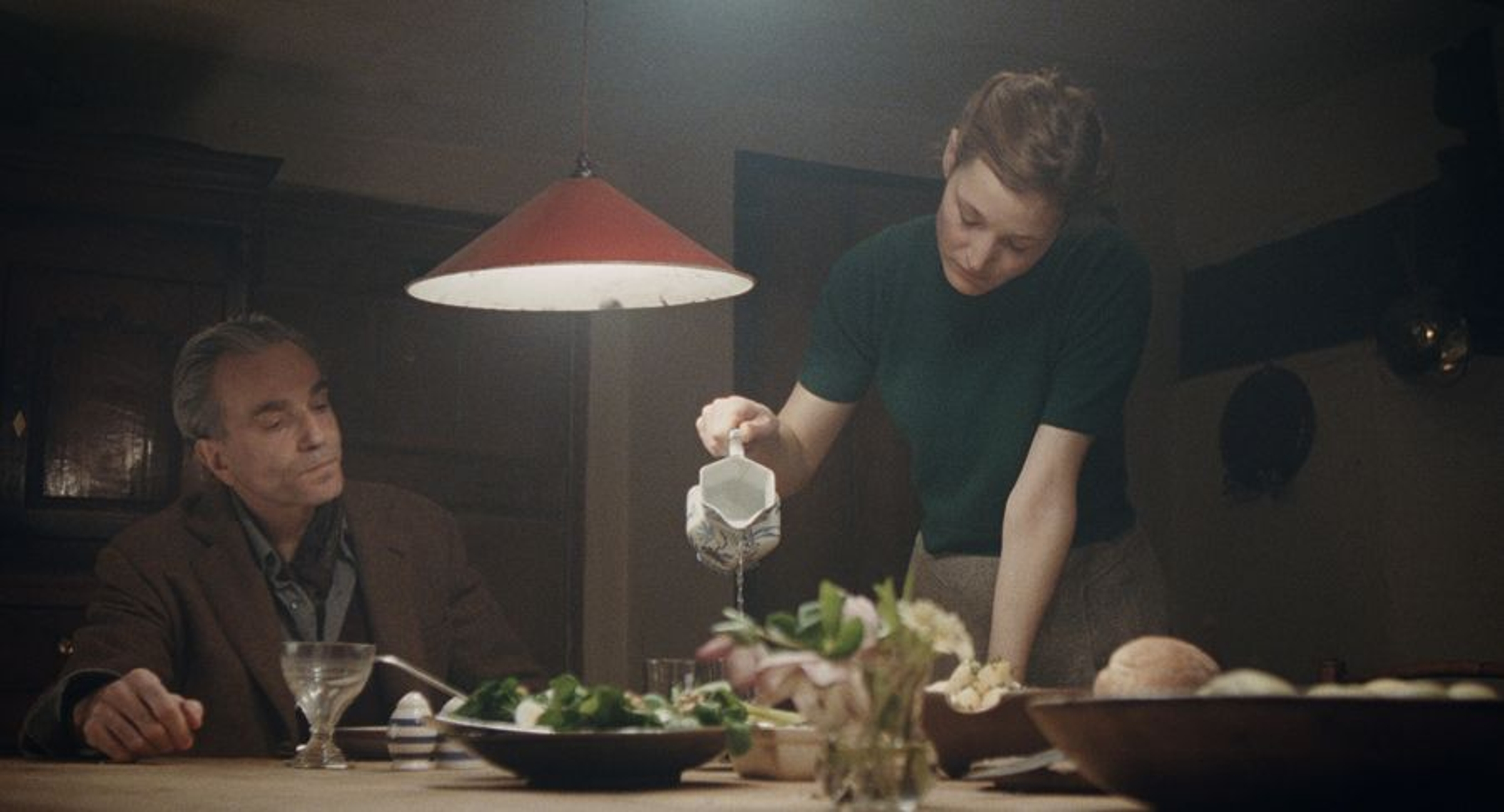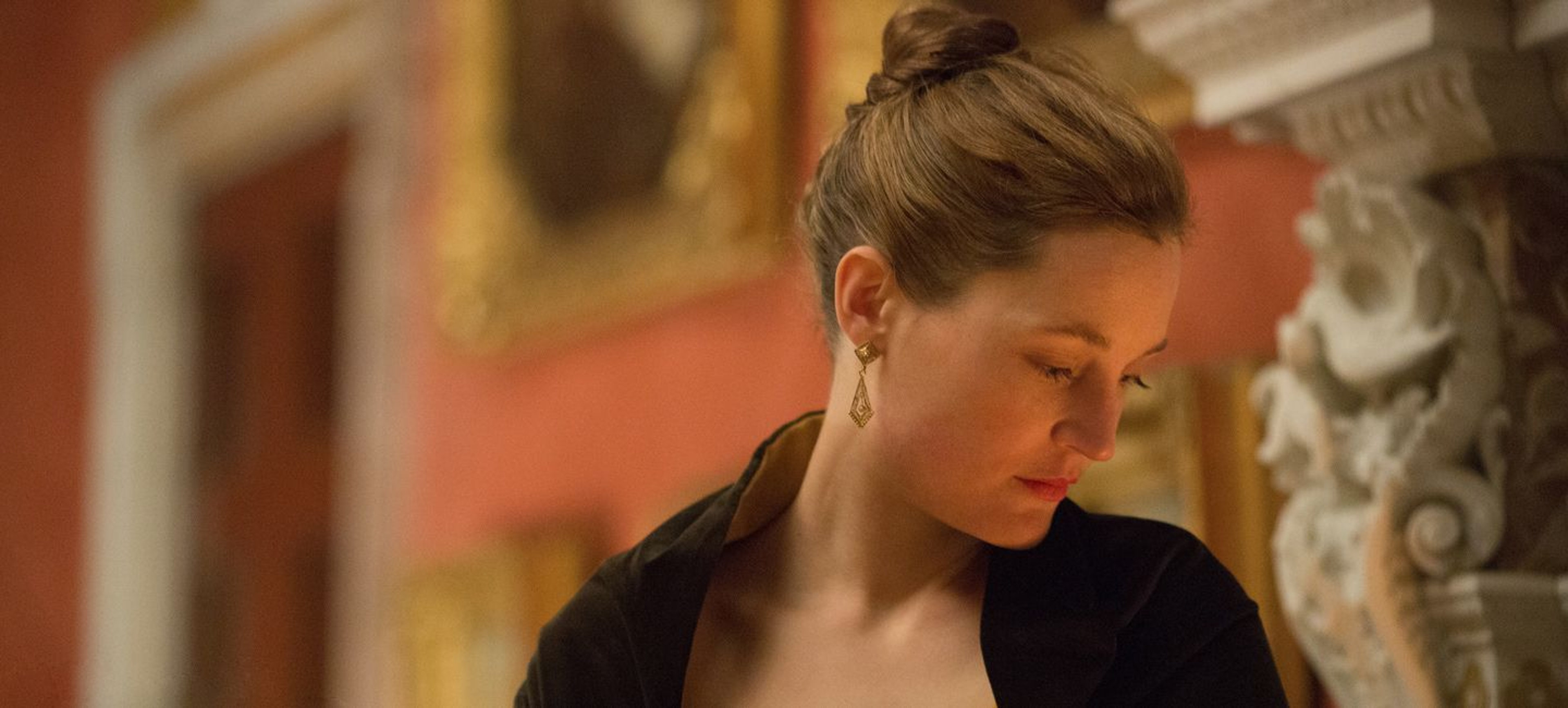For Phantom Thread, Paul Thomas Anderson meticulously creates the world of British fashion designer Reynolds Woodcock (Daniel Day-Lewis). At his London home and atelier––run with steely precision by his sister Cyril (Lesley Manville)––Woodcock dresses London’s elite. At his country retreat Owlpen, he surrounds himself with the personal art and precious memories that ignite his creative imagination. When Alma (Vicky Krieps) enters these perfect spaces––and Woodcock's heart––the designer's best-laid plans come undone. To bring to the screen Woodcock’s exquisite taste and residences, Anderson recruited production designer Mark Tildesley. Working closely with Daniel Day-Lewis, Tildesley created the worlds of a man for whom beauty and craft was a way of life. We spoke with Tildesley about London décor, fashion house design, and working with Daniel Day-Lewis in creating the world of Phantom Thread.
Get tickets for Phantom Thread now.
The official trailer for Phantom Thread
What was the starting point in determining the style of the production design?
There were two big influences that determined the film’s style. One was the Arts and Crafts Movement. When I came on board the first thing we did was visit several places, including Coleton Fishacre, the home of the opera company D'Oyly Carte. It was built in 1910 in the the Arts and Crafts style. The second place we visited was Kelmscott Manor, the home of William Morris. Visiting these places was the beginning of a journey towards a style that would be stripped back, cleaned up, and crafted. The other influence was the designer Balenciaga. His design, which is craft-based, as well as very strong and sculptural in its lines, was the starting point for both the costumes and the style generally.
The film basically takes place in two places---Woodcock’s London home and atelier and his country home Owlpen. How did you distinguish these two places?
We wanted to create a distinction between the country house––which is very much a place of his past, of his mother and his dreams––and his workplace. The life of a designer is quite forlorn. You have work all the time. There was a strict feeling at the house, almost monastic in the style of the room. It does not look like factory, but there are very strict rules and regulations that govern the workday.
For both places, you chose to use existing buildings rather than create sets?
Daniel had pushed for the residences to be real physical locations that had some connection to the outside world. Fitzroy Square itself is a beautiful early Georgian piece of architecture in central London. But the house hadn’t been touched since the seventies. It was a wreck. We had to rebuild all the plaster work and cornices. All the floors had to go down. And we had to wire it up as a studio.

Reynolds (Day-Lewis) and his sister Cyril (Manville) in the cleanly designed space of the Fitzroy Square house
In creating the Fitzroy Square location, did you have historical references about how designers laid out their fashion houses?
Yes. I had a couple of hand-drawn pictures, one with a cross section that showed exactly how the house was broken up. In most houses, the downstairs contains a showroom/welcome area, where people took drinks and tea. There is also the office/management area, which in our film is run by the sister Cyril. Upstairs are the workrooms, where very few guests go. Then there is a showroom where dresses would be shown. The atelier, where the work was done, would either be higher up or would be in the basement. It is very much like a factory, where no client would ever come. Many houses would also have an embroidery section, a tailoring section, and a section for hosiery, hats and other accessories. If it was a small house like ours, that work would be sent out for others to do. At the very top would be a flat which would serve as the private residence.
How difficult was it to adapt the Fitzroy Square house into a fashion studio?
Our job was to keep the palette of the salon simple and clean and to make the house interesting. We needed to find a palette that was simple, but showed off the costumes. It is very much like a dance piece, where you want to see the shapes and the quality of the dresses. Also the downstairs needed to feel very much of the moment. We modernized it with 1950's wallpaper and artwork that would suggest to clients how much the designer was connected to what was fashionable at the time. We lit the rooms, of course, but many of the spaces were particularly dark. To help, we discovered this William Morris wallpaper that had a foil and metallic print which was very reflective.

Cyril (Lesley Manville) admires Alma (Vicky Krieps) as a model in the Fitzroy Square townhouse.
How did Daniel Day-Lewis work with you? I understand he used the design process as a way of developing his character.
Daniel was connected to everything from picking a shaving brush to a fountain pen. There is an enormous amount of detail he looked after. I hate the idea that we as the designers just come in and create a bedroom that someone is supposed to have lived in for twenty years. It’s so much better to have a dialogue upfront with the actor about the character whose items are in the room.

Reynolds Woodcock (Daniel Day-Lewis) in his private design studio in Phantom Thread.
Since Owlpen is Reynolds’ private sanctuary, did you pick objects and artwork that give us a sense of the character’s psyche?
In creating Reynolds, Daniel really had to unravel his character’s past. For example, he imagined that during World War II he operated behind enemy lines in France as a member of the SAS (Special Air Service). When he looks through the box of memorabilia, there are various badges from his past. We had several paintings by the French artist Chaim Soutine, because Reynolds would have had a relationship with him in France. Today those paintings would be very expensive, but in Woodcock’s time––if he was a friend––he might own a few. Likewise, he had some paintings by John Nash, whom he might have known from his younger days in London. We also had some calligraphy in the bedroom that was done by Reynolds Stone. There was an extra personal connection there because Stone created woodcuts for the covers of some of the early poetry books by Daniel’s father, Cecil Day-Lewis. Stone’s grandson, who had actually played with Daniel as a kid, sent us some woodblocks which we had printed and put up in the house. Our job was finding artists that Daniel related to in his character’s world.

Alma (Vicky Krieps) and Woodcock (Daniel Day-Lewis) in Owlpen's finely crafted world
Sign up for the Focus Insider newsletter to be first in line for free advance screenings, world premiere travel packages, weekend set visits, and so much more!
